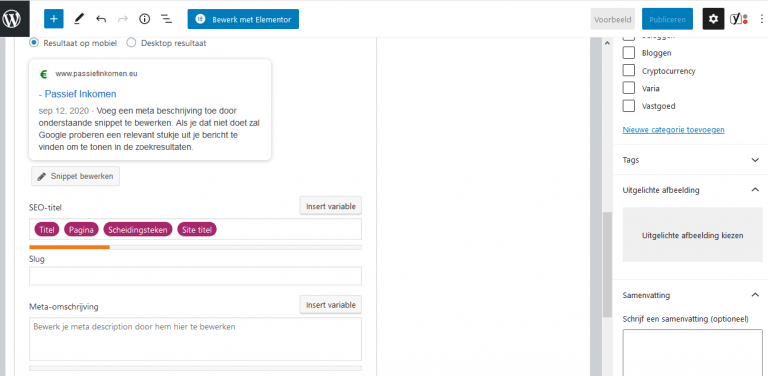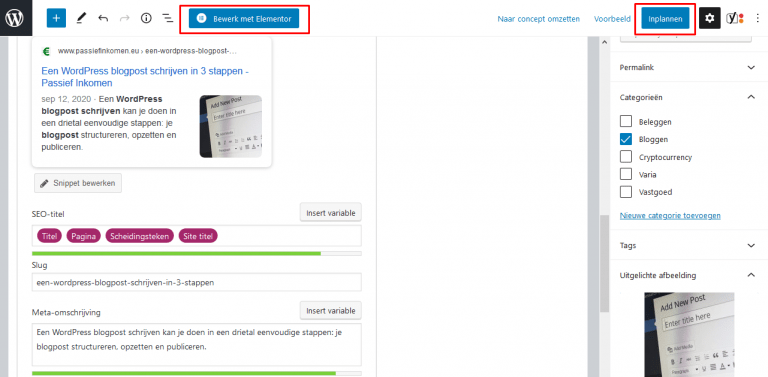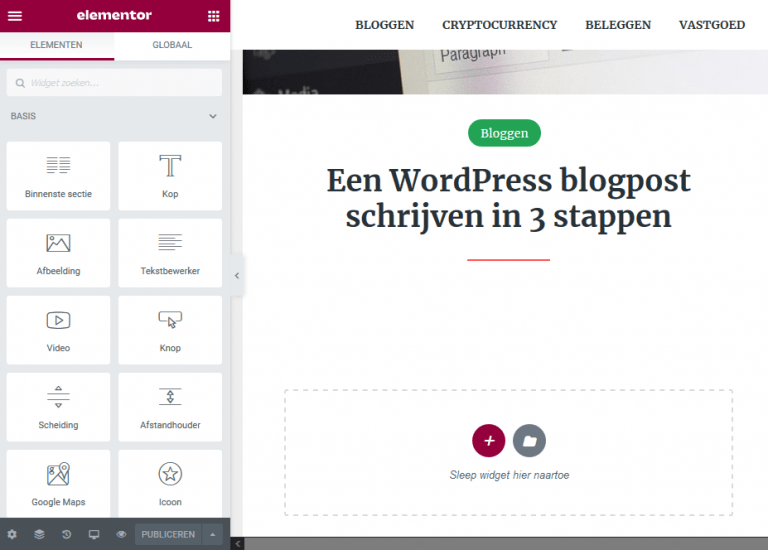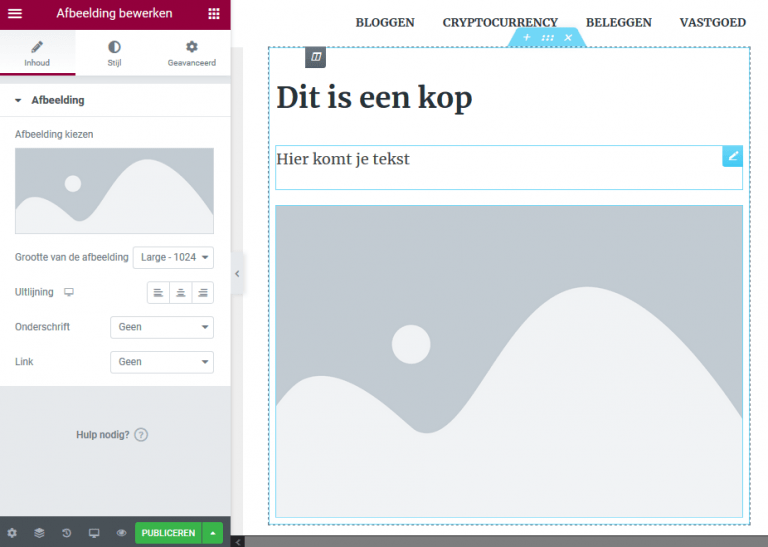Een WordPress blogpost schrijven in 3 stappen
Laatste update: 27 maart 2022
Een blogpost schrijven en publiceren is erg gemakkelijk, maar als je dit nog nooit gedaan hebt kan je zeker voor heel wat vragen komen te staan.
Ik heb je reeds getoond hoe je een website kan opstarten met WordPress, en in dit vervolgartikel toon ik je stap voor stap hoe je een blogpost kan schrijven en publiceren.
Als Thema hiervoor gebruik ik Masonry Blog en als paginabouwer Elementor. Een prominente addon is Yoast SEO.
Het is niet noodzakelijk dat je deze ook gebruikt, maar het zal meevolgen alleszins veel eenvoudiger maken.
Wil je zelf ook beginnen met een WordPress blog? Dan kan je een websitenaam en hosting aanschaffen bij BlueHost.
Stap 1: Blogpost structureren en schrijven
Bij het effectieve schrijven van je artikel kan ik je weinig helpen, dit hangt immers af van je niche, persoonlijke stijl en eigen voorkeuren.
Zodra je een idee hebt over wat je blogpost zal gaan en je onderzoek hebt gedaan, kan je gewoon een Word-documentje openen en de structuur van de post uitzetten.
Hierna is het gewoon een kwestie van die structuur invullen!
Als je meer richtlijnen wil, kan je mijn artikel lezen over Hoe je een ebook kan schrijven.
Stap 2: Blogpost opzetten
Ga naar je WordPress Dashboard.
Selecteer Berichten aan de linkerkant en klik op Nieuw Bericht.

Nu krijg je een scherm te zien waar je allerlei gegevens over je blogpost kan invullen, zoals
- Titel
- Sleutelwoord (als je Yoast SEO hebt geïnstalleerd)
- Publicatiedatum
- Categorie
- Tags
- Uitgelichte afbeelding
- Samenvatting
- SEO-titel
- Meta-omschrijving
En een heleboel andere Berichtattributen.

Het belangrijkste hier is het sleutelwoord.
Ik heb reeds uitgelegd hoe je Sleutelwoord/zoekwoordonderzoek kan doen (KeyWord Research), dus als je hier hulp bij nodig hebt kan je dat artikel lezen.
Voor deze blogpost krijg ik deze resultaten:

Ik ga voor een combinatie ervan gaan: wordpress blogpost schrijven.
Dit sleutelwoord moet ik gebruiken in de titel, dus ik ga voor Een WordPress blogpost schrijven in 3 stappen.
De Categorie van deze post is duidelijk Bloggen.
Als SEO-Titel gebruik ik de titel van het artikel plus “Hoe blog maken?”. Hiermee raak ik een aantal sleutelwoorden.
De Meta-beschrijving en Samenvatting bevatten idealiter het sleutelwoord, net als de Alt-tekst van je Uitgelichte Afbeelding.

Zodra je alles hebt ingevuld, kan je op Inplannen drukken in de rechterbovenhoek.
Vanaf je post is ingepland, kunnen we naar de volgende stap gaan en de post publiceren! Dat kan je doen door op Bewerk met Elementor te drukken.

Nu kom je op de Elementor paginabouwer van je specifieke blogpost terecht. Dat ziet er zo uit:

Stap 3: Blogpost publiceren
Om je pagina te bouwen kan je simpelweg elementen van het linkermenu selecteren en ze verslepen naar de pagina.
Zoals je kan zien zijn er veel elementen om uit te kiezen, en nog een heel pak extra als je Elementor Pro koopt.
Maar ga niet te gek, hoe ingewikkelder je je pagina maakt, hoe trager die zal laden.
De 3 meest gebruikte elementen zijn Kop, Afbeelding en Tekstbewerker, en dat is al dat je nodig hebt voor een simpele blogpost.
We slepen één van elk naar de pagina, en krijgen dan dit:

Als het je allereerste blogpost is, zal je wellicht de tekstopmaak van je kopjes en teksbewerker willen aanpassen.
Nu is het in feite alleen een kwestie van je kopjes, tekst en afbeeldingen in de blogpost te zetten, en die te Publiceren!
Een WordPress blogpost schrijven - samenvatting
Een blog opstarten via WordPress kan je zeer snel doen en dit heb ik in detail besproken in een vorige post.
Een specifieke blogpost maken is erg eenvoudig:
- Structureren en schrijven
- Opzetten
- Publiceren
Zo simpel is het!
Uiteraard kan je enorm in detail gaan, en bij elke stap van dit proces kan je erg diep gaan en dan komt er meer bij kijken dan wat ik je heb getoond, maar voor een simpele blogpost is er niet meer nodig.
Indien je zelf ook wil beginnen met een blog, kan je je website en hosting aanschaffen via de kwalitatieve provider BlueHost.



